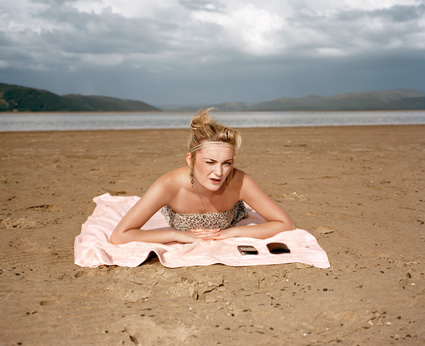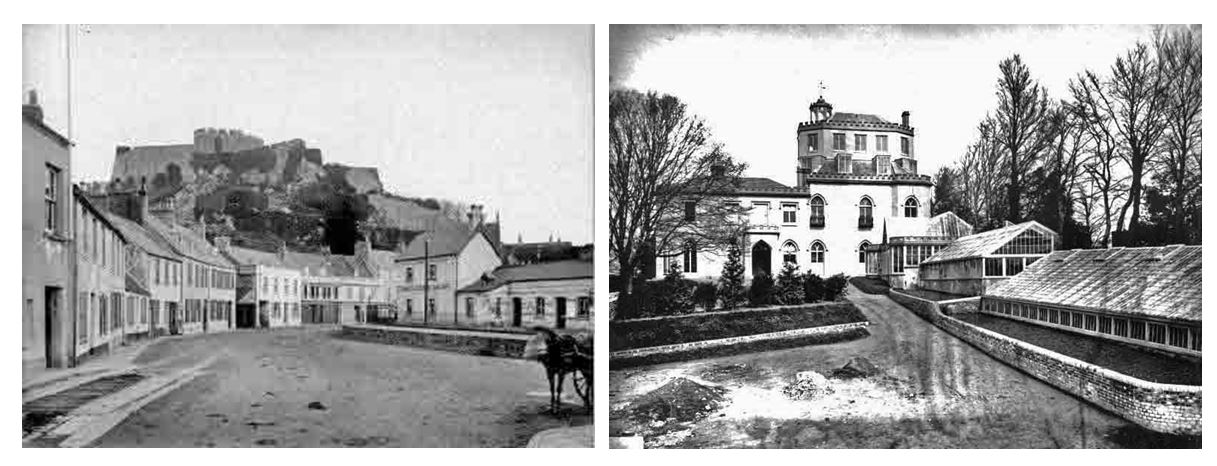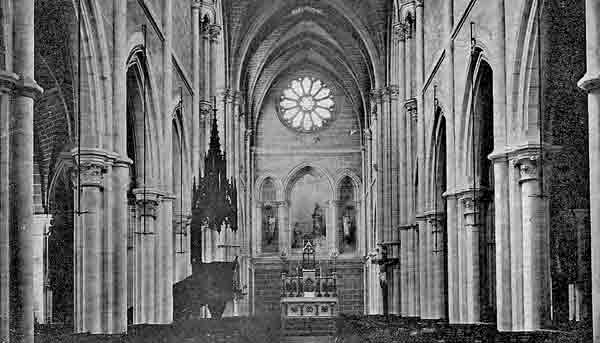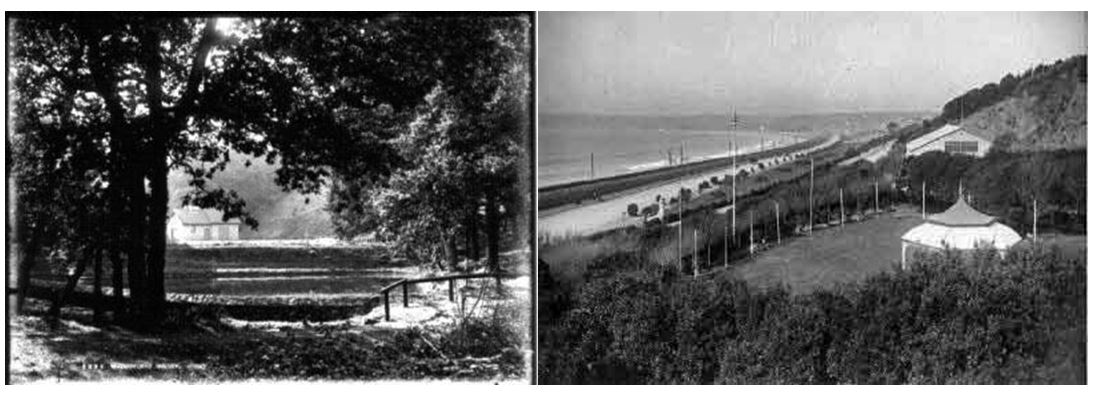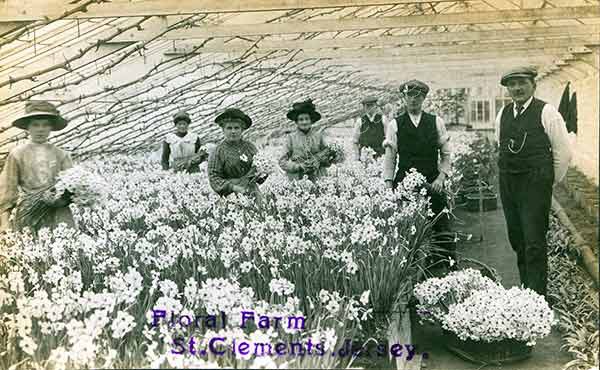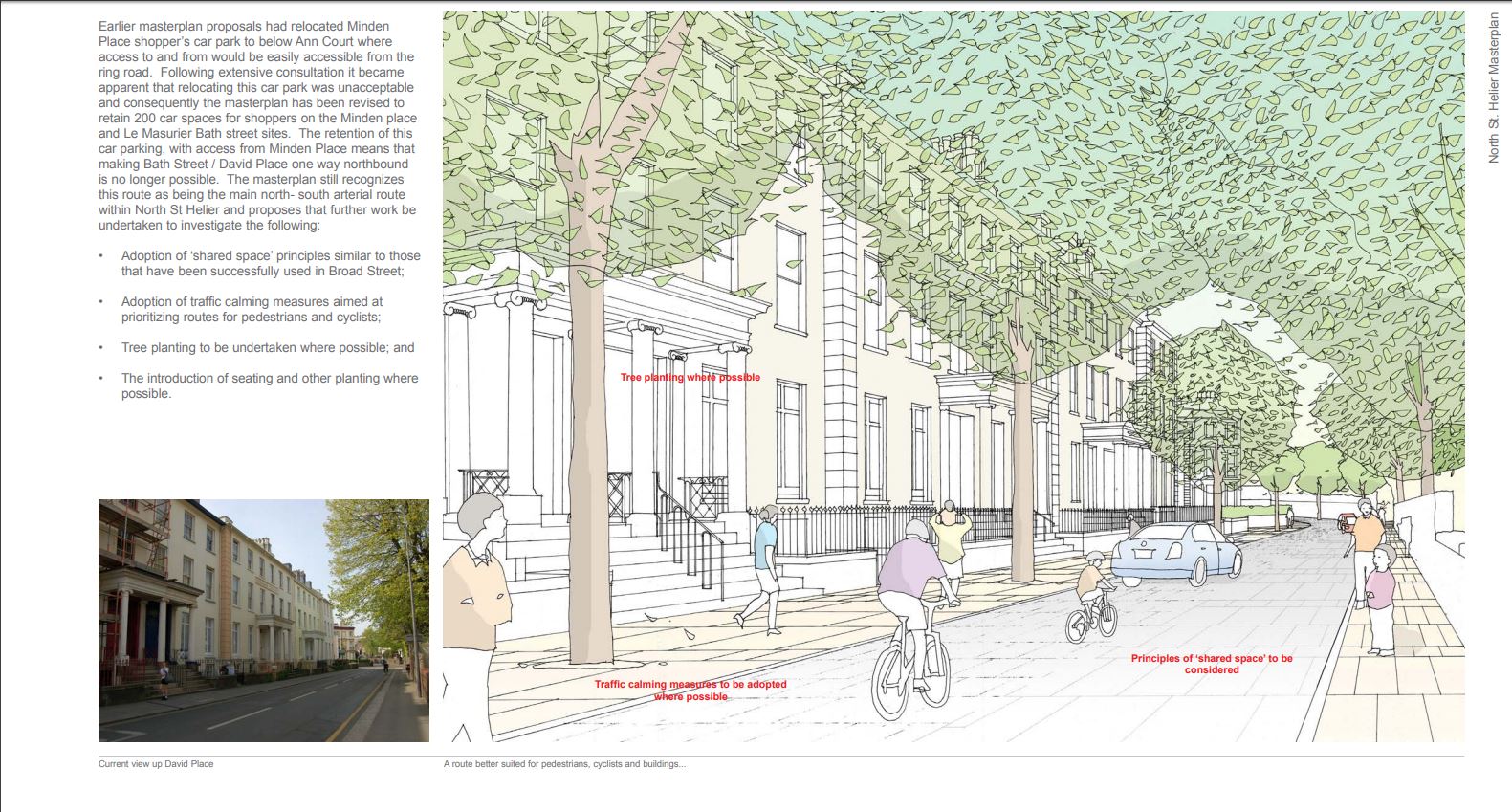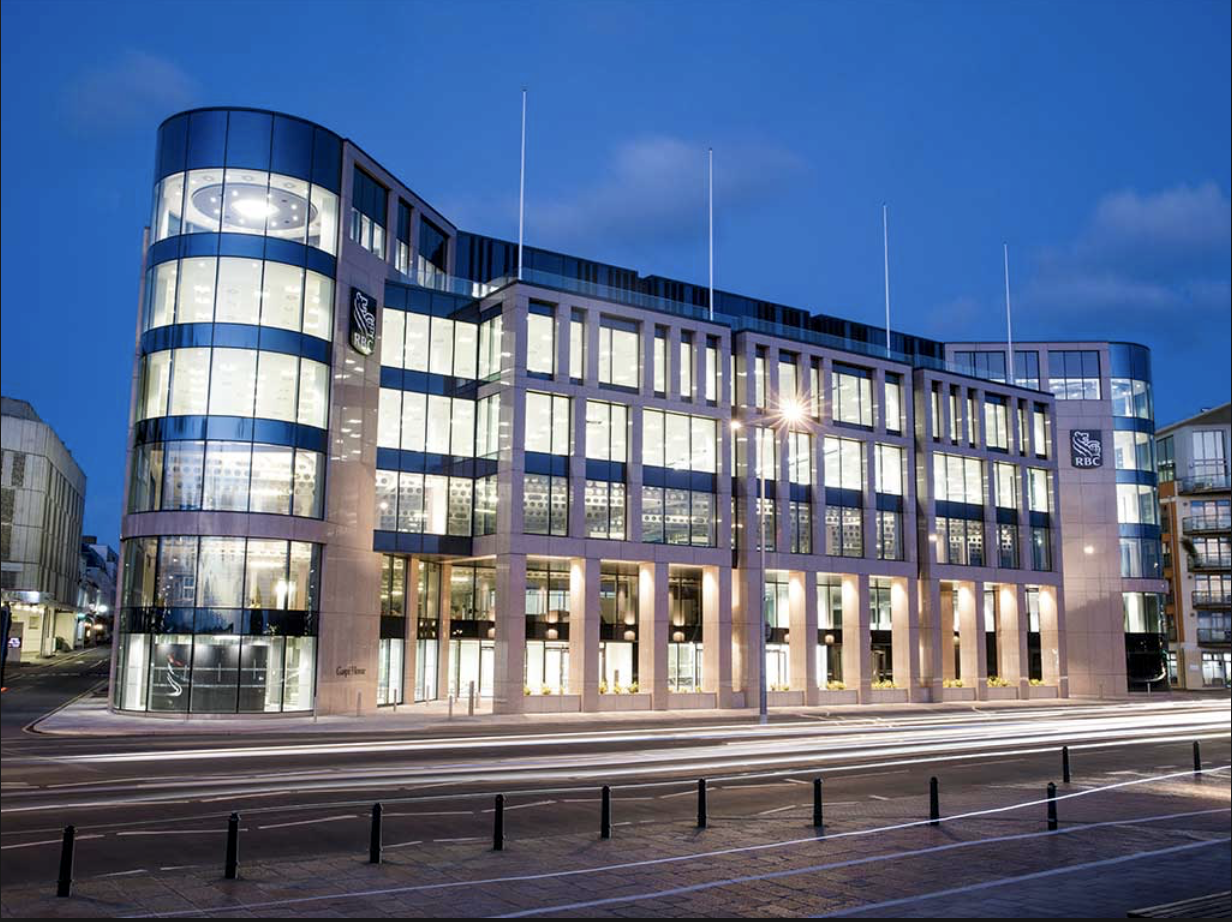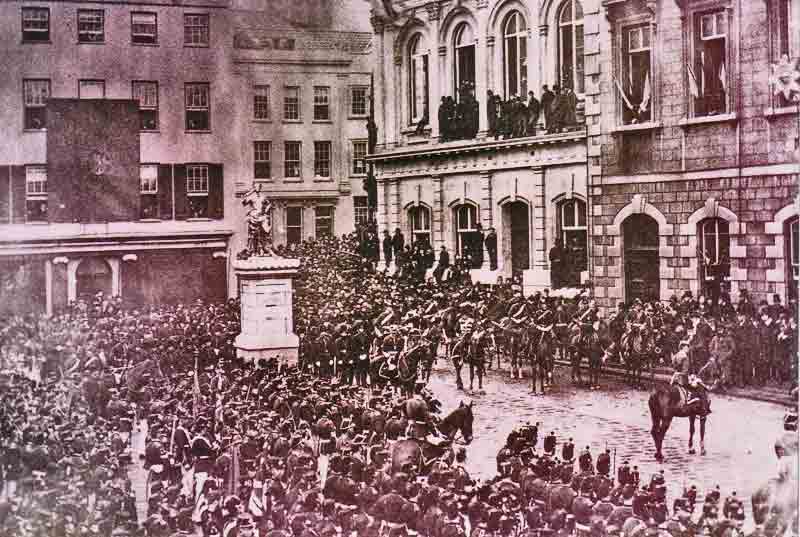Albert Smith
Albert Smith is the best known and probably the most prolific of Jersey’s early photographers, although a significant number of pictures credited to Smith, specifically the photographs used for his post cards, were not taken by him, but by employees or by Ernest Baudoux, whose business he acquired when he arrived in Jersey from London.
Smith started in business in Jersey in 1892 from premises at 59 New Street, which he kept until 1931. He also had outlets at 13 Beresford Street and 45 Bath Street from 1899 to 1907, but he closed these and opened an outlet at 3 Broad Street, which also continued to operate until 1931.
Thousands of his images survive as glass plate negatives and subjects include studio portraits and portraits of cattle. Many of his views were sold as postcards. Nearly 2000 of Smith’s photographs can be seen online in the photographic archive of la Societe Jersiase, out of a total of nearly 3,300 of his photographs held in the archive.
His portfolio of photographs shows the extreme diversity of Albert Smith’s work. Even though not all of the photographs may have been taken by him, they are all attributed to his business. Many are commercial, but others show a fascinating documentary of life in Jersey in the late 19th and early 20th century. Smith was not predominantly a portraitist even though lots of his photographs show this, he preferred to work outside photographing groups on carriage and charabanc outings.
Smith published a book in about 1910 named ‘102 Views of Jersey and the Channel Islands‘, which includes pictures of early Battles of Flowers, and a selection of pictures of Guernsey.
I chose to research Albert Smith as in my shoot on Tuesday 19th June, I would like to be able to focus on environmental photographs as Smith does and would also like to take pictures of the architecture such as Victoria College to create an old-fashioned feel. Albert Smith’s diversity in photographs is what mainly appealed to me.


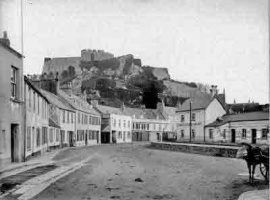

Analysis of an Albert Smith Photograph

In this photograph by Albert Smith, it appears that a natural lighting was used to show the natural shadows and contrast in this environmental portrait. This ensures the photo shows how Jersey really looked in the earlier stages. A deep depth of field will have been used for this photograph as the whole of the photograph is in focus – there is no blurring for effect, it is all kept completely natural. A shutter speed of around 1/60 will have been used along with a fairly low ISO of 200-800. This is because the quick shutter speed ensures no movement blurs in the photograph whilst the ISO ensures that the photograph is bright enough to show the subjects. The photograph has a warm orange tinge to it, reminding the viewer that it is a very old photograph.
There is no colour in this photograph as it was taken between 1892 – 1931, this rustic feel in the photographs creates a natural sense to show that is documentary photography. There is a wide tonal range in this photograph as the bright white sachets on the officers contrast with their black uniforms to create different tones. The image has a 3D setting due to the positioning of the subjects – the officer on the chair is clearly in front of the cannon with the other two officers standing behind him. The old faded effect partly takes away from the 3D effect due to the faded contrast and shadows.
This environmental photograph shows three RJA officers in the work environment posed for a photograph. This documents what St. Helier was like before all of the land reclamation and development and also shows what the people were like through the choice of hair styles and facial hair. Smith would take lots of portrait photographs similar to this showing groups of St. Helier residents in their work environment or natural habitat.
I think that when Smith was taking all of these portraits and landscape photographs he was focusing on experimenting on what he could do photography as it was relatively new at the time. Smith showed us the development of photography and St. Helier along with the residents in it. Whether Smith realised it or not, he documented St. Helier for future use and gave us an insight into early photography with the purpose of showing the different views and areas of Jersey.



